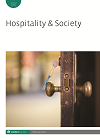
Full text loading...
 , Kyla Walters2
, Kyla Walters2 , Dennis Nickson1
, Dennis Nickson1 , Tom Baum1
, Tom Baum1
This article considers the intersection of sexual harassment and internal hegemonic masculinity in assessing the experiences of men working in the gay tourism industry in Spain. It reports data from 36 interviews with managers and employers in a range of organizations primarily catering for gay, male customers. Consideration of the experiences of men working in the gay tourism industry allows for an understanding of how they navigate the near-constant sexual harassment they experience from customers and how these experiences can be located within contemporary debates about masculinity. The article introduces the concept of ‘submissive masculinity’ to explain how the sexual harassment suffered by the men working in this context is normalized and accepted, despite being unwanted, contributing to the vulnerability and subordination of men experiencing sexual harassment from other men.

Article metrics loading...

Full text loading...
References


Data & Media loading...

Publication Date:
https://doi.org/10.1386/hosp_00068_1 Published content will be available immediately after check-out or when it is released in case of a pre-order. Please make sure to be logged in to see all available purchase options.